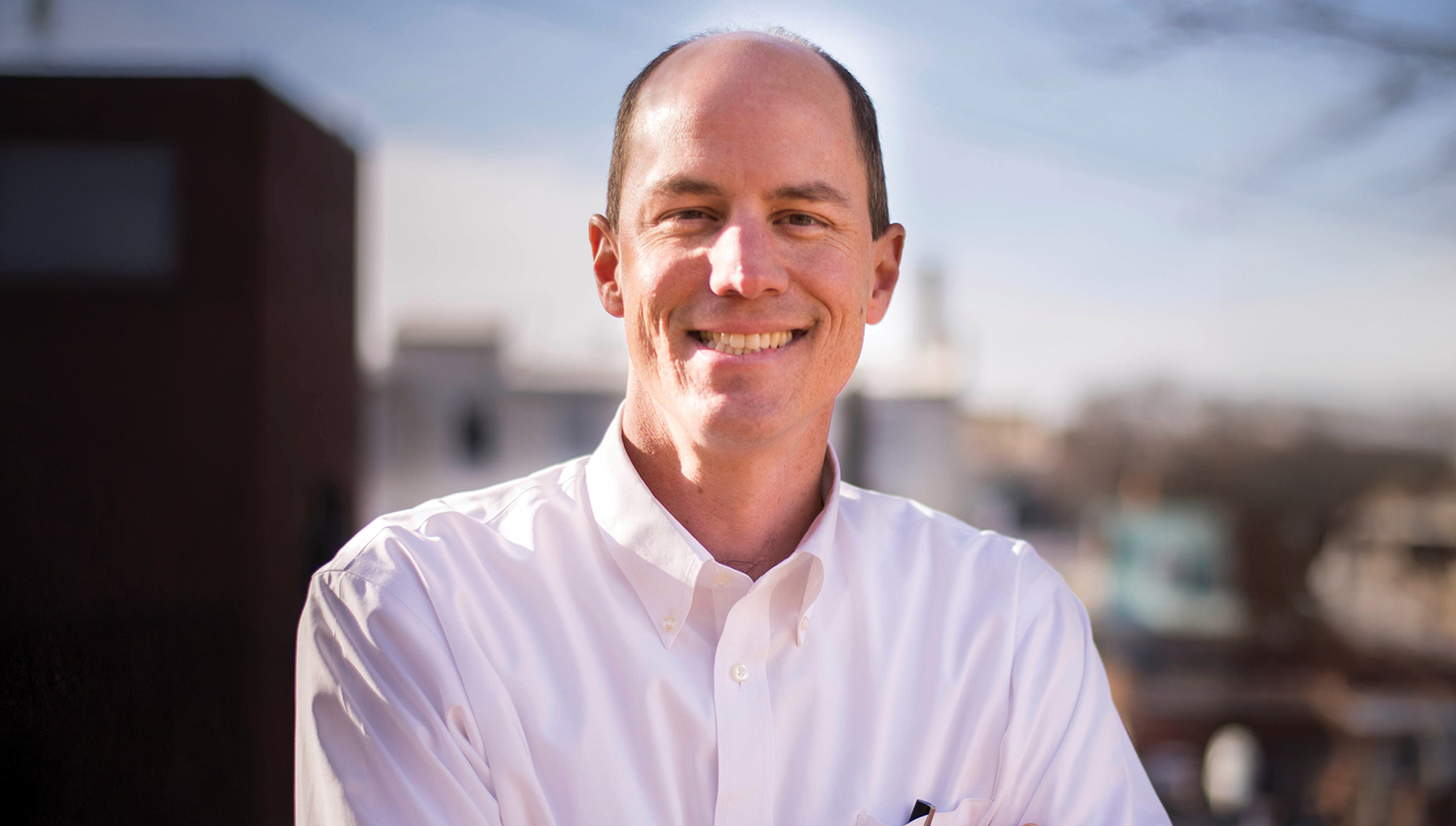The Business of Building Better
Howard Turner Jr. M.B.A. ’02 is making sustainability pay off
October 1, 2025
By
Jeremy Norman

Sustainability is not an abstract concept for Howard Turner Jr. M.B.A. ’02. It’s a tangible, measurable pursuit that transforms outdated facilities into efficient, environmentally responsible assets. As senior director of preconstruction and risk management at McKinstry, Turner spearheads projects that reduce utility consumption, cut carbon emissions and save his clients money.
Blending engineering expertise with business strategy, Turner identifies opportunities for efficiency that are unique to each client. “We’ll put together a portfolio of improvements, spend X to get Y, then implement, validate and even guarantee the results,” he explains. “If we say your building will save you $300,000 a year and it doesn’t, we write you a check for the difference.”
Turner’s approach is deeply rooted in his connection to the environment. Growing up on Virginia’s Eastern Shore, where his father worked as a farmer, Howard developed an awareness of the intersection between nature and humanity. “When you grow up on a farm, you become aware of what’s going on in the environment,” he says. “You develop a sense of responsibility to be a good steward.”
With engineering degrees from Johns Hopkins University and the University of Virginia, Turner began his career in Richmond, Virginia, during the late-1990s construction boom. Initially focused on greenfield development — construction on undeveloped land — he soon questioned why so much effort went into building new when so many existing structures already stood waiting for improvement.
That shift in perspective also made him realize that if he wanted to lead people and projects, he needed to develop new skills. “As an engineer, I could talk technical details all day, but I wasn’t equipped to engage with CFOs or marketing professionals,” he says. “I needed to be able to speak the language of business.”
Enter William & Mary and the Raymond A. Mason School of Business Executive MBA (EMBA) program. Encouraged by mentor and EMBA alumnus J. Scott Heslink M.B.A. ’00, Turner joined the 16th EMBA cohort in 2000. Designed for professionals on the path to senior executive and C-suite roles, the program’s combination of academic rigor, weekly in-person sessions and real-world application solidified his decision. “William & Mary has a strong quantitative reputation, which appealed to my engineering side,” he says. “The professors were excellent, and the weekly format kept me connected to campus.”
The diversity of his classmates also made a lasting impression. “We had doctors, Naval officers, engineers, finance professionals and tech people,” he recalls. “The conversations were rich because everyone brought different expertise to the table.”
Turner’s EMBA experience was not just about acquiring new skills, but it also marked a significant shift in his thinking. It propelled him from a role of project execution to one of leadership, where he could blend technical expertise with strategic decision-making.
In his current work, Turner addresses some of the century’s most pressing challenges: energy use, carbon reduction and the infrastructure demand of new technology. Data centers, for example, are driving an unprecedented construction boom fueled by artificial intelligence and cloud computing. But rapid growth comes with constraints, from long lead times for critical equipment to limits on grid capacity.
“Understanding not just the solution, but the growth limiters and enablers that make it possible, is where the business knowledge from my EMBA comes into play,” he says. That perspective fuels his belief that efficiency and sustainability go hand in hand. “It is about doing your part, being efficient and making buildings better for both occupants and the environment,” Turner adds. “You can move past the politics quickly when you show that the investment saves money and improves quality of life.”
According to Turner, the EMBA program’s multidisciplinary environment mirrored the complexity of his work. “These are multimillion-dollar projects with layers of financing, tax considerations and technical execution,” he says. “You don’t need to be an expert in every area, but you need enough working knowledge to spot issues, connect the pieces and keep your team focused on optimizing the project as a whole.”
Turner remains a strong advocate for the program, recommending it to colleagues and even his wife, Hanna Turner M.B.A. ’04, who graduated with the 18th EMBA cohort. “This isn’t surface-level training,” he says. “It is a place where, after you have been in the workforce, you go to elevate your perspective. You come out thinking differently, more strategically, about your work and your leadership.”
Looking back, Turner sees his participation in the EMBA program as a turning point. “You never know exactly how or when something will change your trajectory,” he says. “For me, the program was a differentiator. It gave me the tools to lead a business, the language to connect across disciplines and the perspective to navigate complexity with purpose.”
That perspective continues to shape his work today. From decarbonizing facilities to guiding organizations through new energy realities, Turner channels what he learned into practical problem-solving with purpose. “Every building we improve is better for the environment and better for the people inside,” he says. “That is the kind of impact I want to make.”